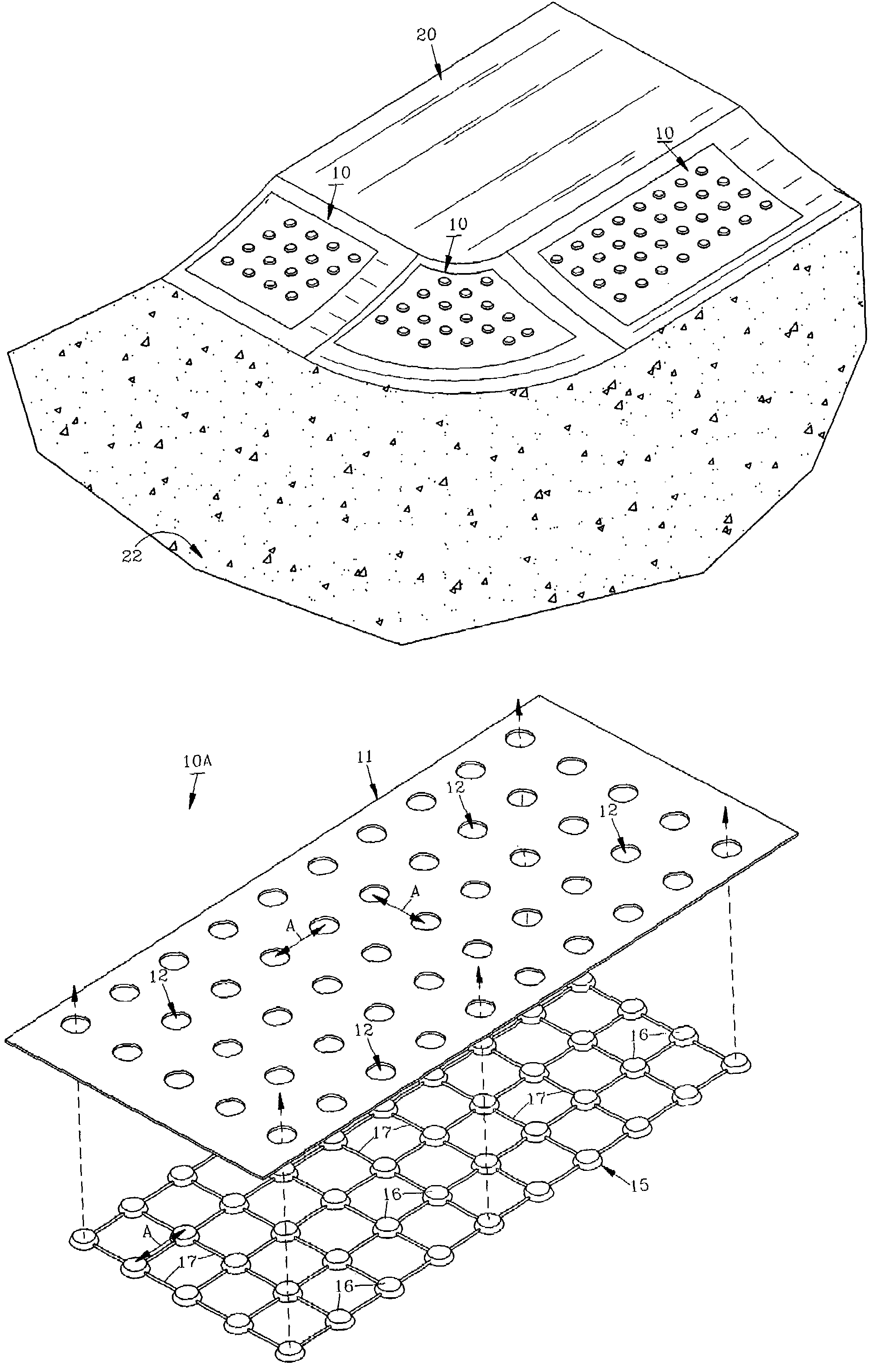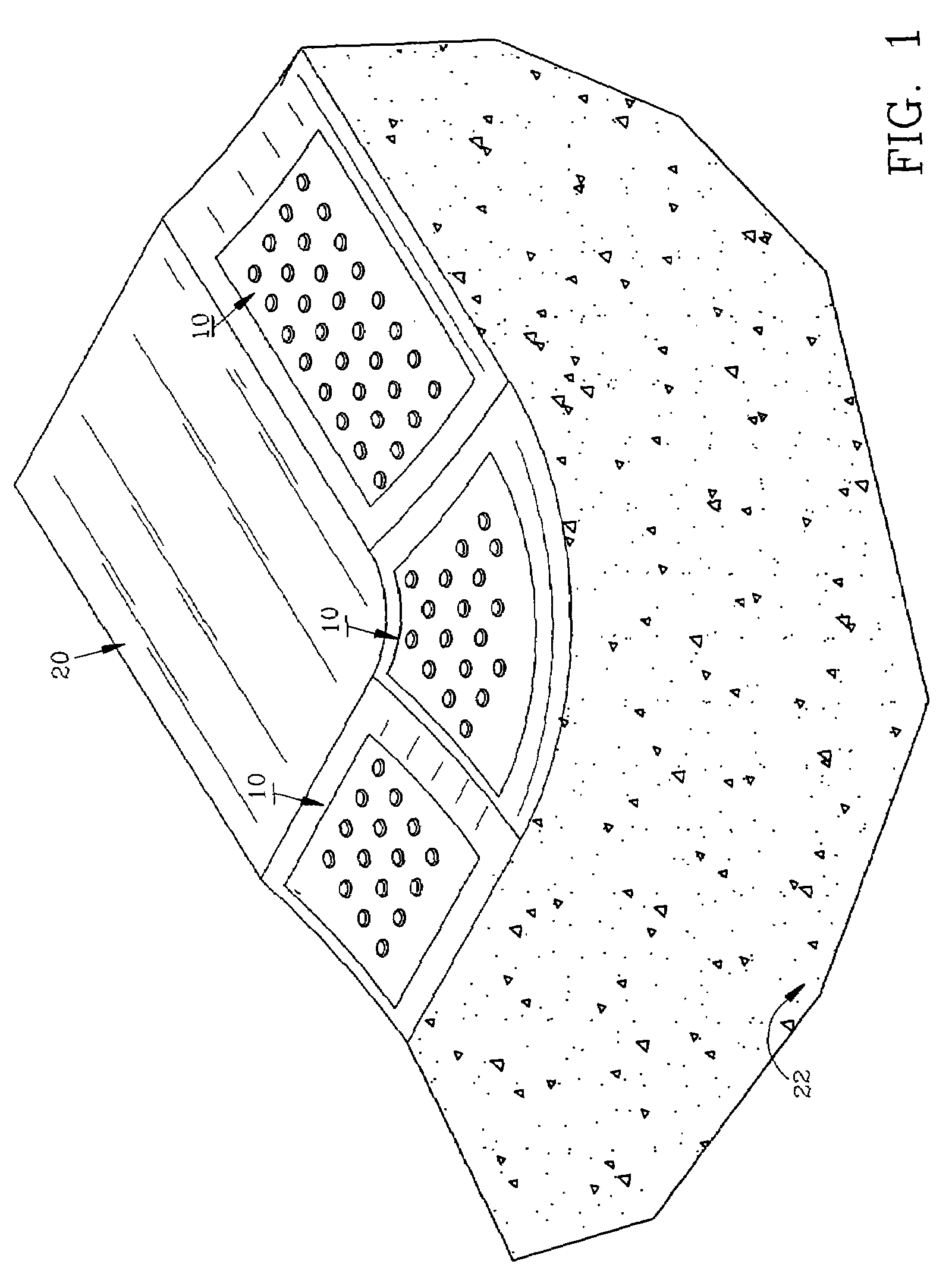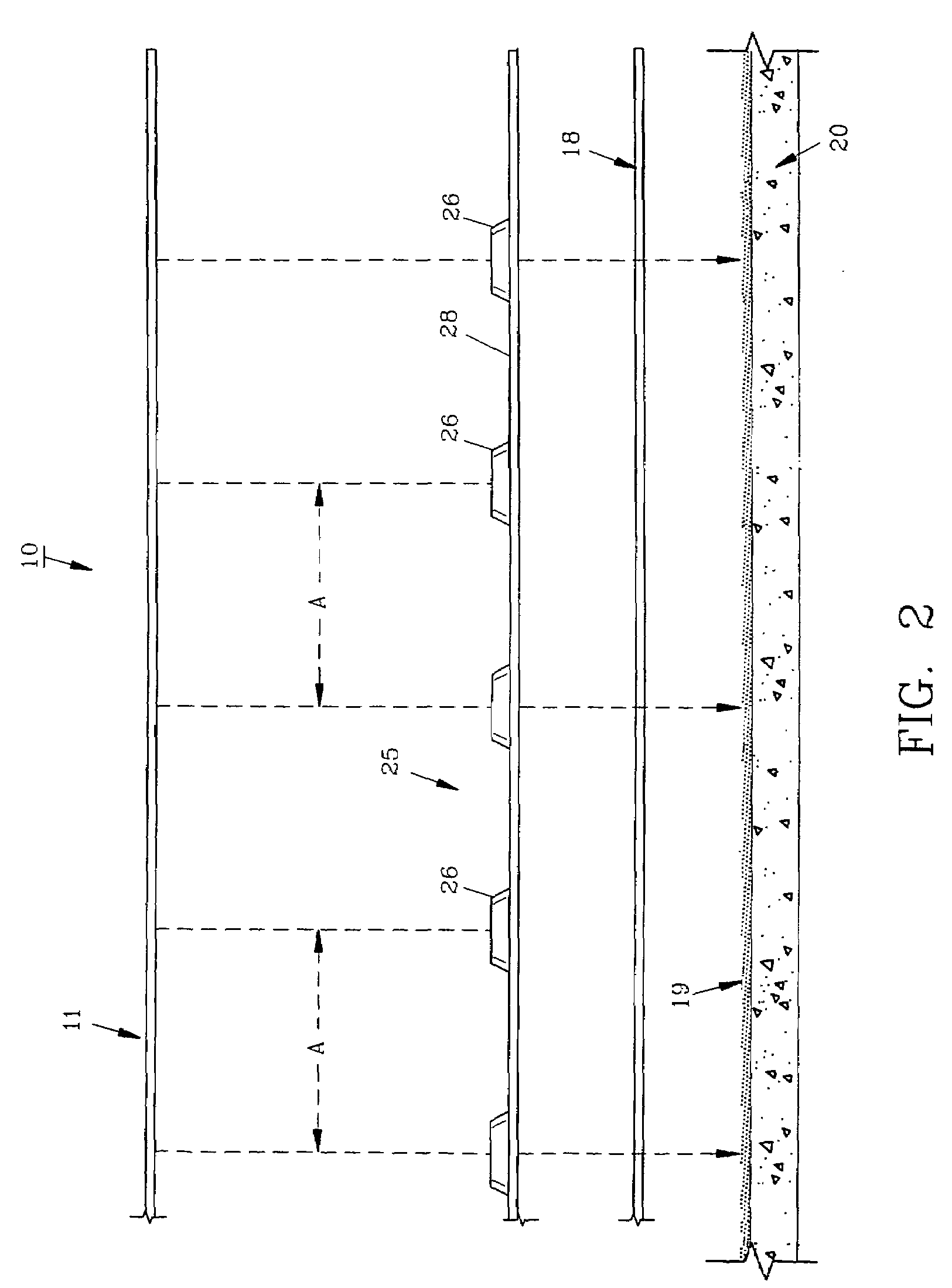Preformed pavement warning assembly and method
a warning assembly and preformed technology, applied in the field of pavement warning assemblies, can solve the problems of difficult retrofitting to contoured curb ramps, difficult to precisely timing, rigid assembly, etc., and achieve the effect of reducing the difficulty of detection of warning assemblies, and reducing the difficulty of detection
- Summary
- Abstract
- Description
- Claims
- Application Information
AI Technical Summary
Benefits of technology
Problems solved by technology
Method used
Image
Examples
Embodiment Construction
[0068]For a better understanding of the invention and its method of application to a substrate, turning now to the drawings, FIG. 1 schematically illustrates a typical fragmented sidewalk section 20 as formed from concrete with a height of approximately four (4) inches (10.2 cm) which slopingly abuts roadway 22 at a typical corner or intersection. Preferred detectable pavement warning assemblies 10 are shown positioned in three (3) locations to provide tactile warnings to pedestrians, such as visually impaired pedestrians as they walk across warning assemblies 10 to roadway 22. One or more pavement warning assemblies 10 may be utilized in a typical installation.
[0069]Preferred pavement warning assembly 10 includes planar top layer or cover 11, web 25 and bottom adhesive layer 18 as seen exploded in FIG. 2 prior to assembly and installation on sidewalk section 20 having a standard polyurea-epoxy primer 19 thereon. Cover 11 is formed by conventional stamping of a planar thermoplastic,...
PUM
| Property | Measurement | Unit |
|---|---|---|
| bond strength | aaaaa | aaaaa |
| bond strength | aaaaa | aaaaa |
| bond strength | aaaaa | aaaaa |
Abstract
Description
Claims
Application Information
 Login to View More
Login to View More - R&D
- Intellectual Property
- Life Sciences
- Materials
- Tech Scout
- Unparalleled Data Quality
- Higher Quality Content
- 60% Fewer Hallucinations
Browse by: Latest US Patents, China's latest patents, Technical Efficacy Thesaurus, Application Domain, Technology Topic, Popular Technical Reports.
© 2025 PatSnap. All rights reserved.Legal|Privacy policy|Modern Slavery Act Transparency Statement|Sitemap|About US| Contact US: help@patsnap.com



